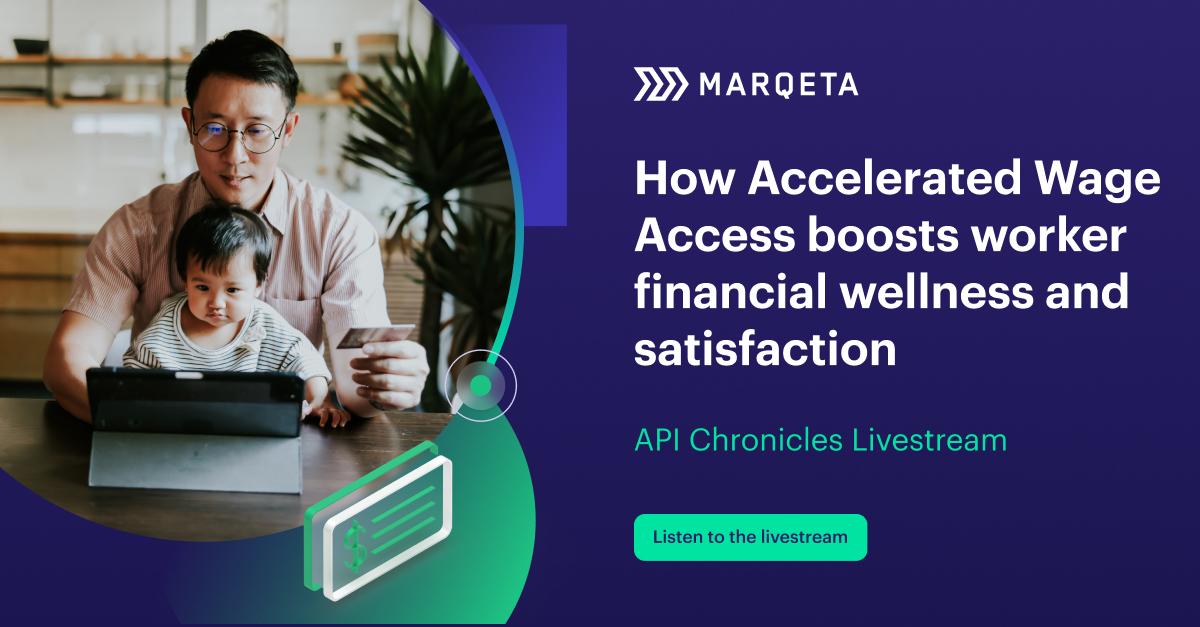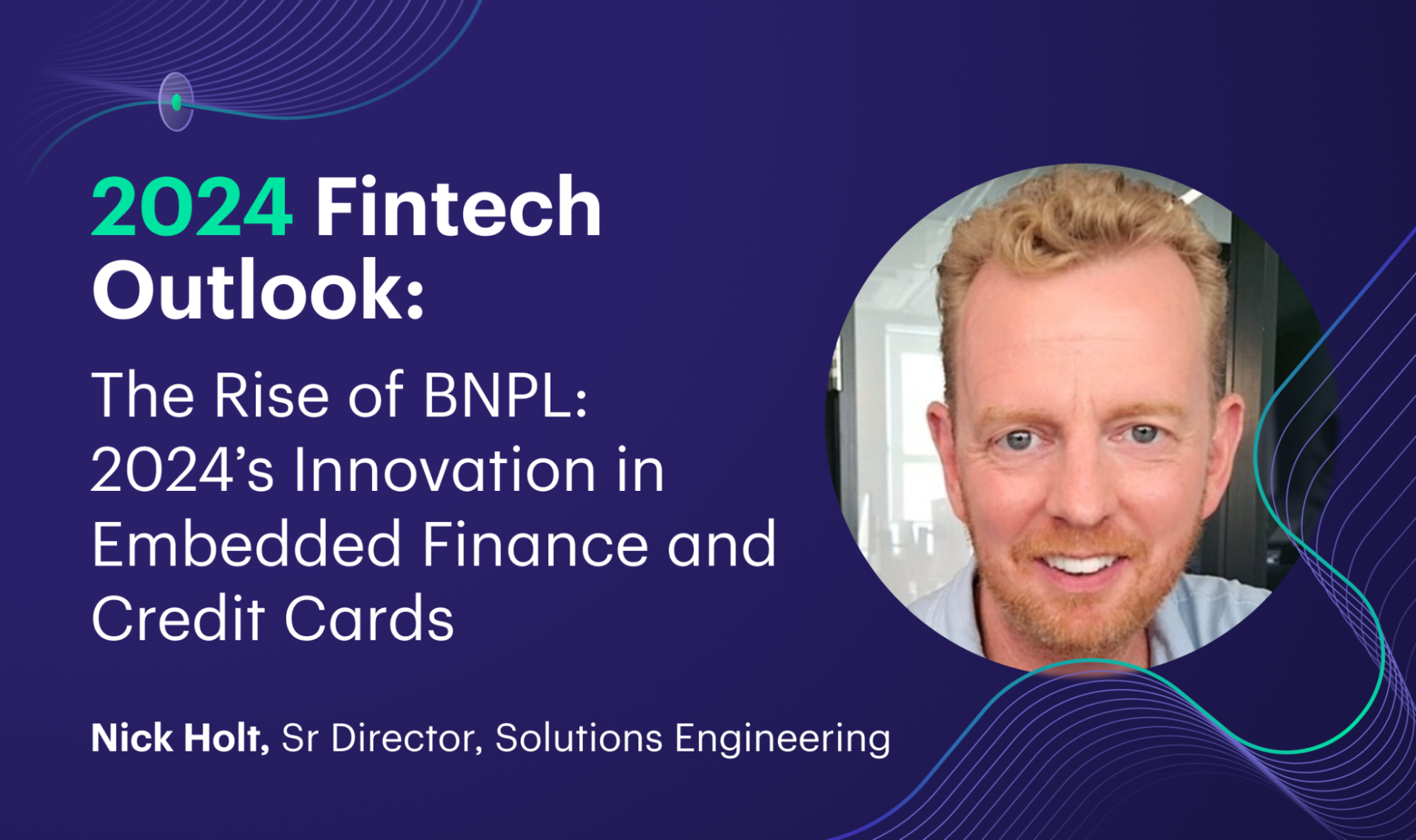API Chronicles livestream roundup: is embedded finance a fintech revolution or evolution?
“Embedded finance means that any company can offer financial services to its customers at the moment of need and plays to the strengths of everyone in the value chain.” So summarise Sophie Guibaud and Scarlett Sieber in their excellent book on what happens when payments become an experience (read Marqeta’s exclusive interview with Sophie here). Whether you’re a company founder, payments geek or simply an ordinary consumer, this handy, insight-packed tome is well worth a read.
In fact, the team at Marqeta International was so inspired by Sophie’s and Scarlett’s thought leadership that we decided to dedicate one of our popular API Chronicles livestreams to the landscape-shaping subject of embedded finance.
And with a star panel comprised of mmob’s Olivia Minnock, Stew Cofer from JP Morgan Chase & Co, and Lars Markull of Embedded Finance Review, the event titled Embedded revolution: why payments are about to become part of all user journeys looked at everything from definition to use cases and more. Here’s a summary of the discussion, which can also be watched here.
What exactly is the definition of embedded finance?
Hosted by Elizabeth Lumley, Deputy Editor of The Banker, the panel kicked off by exploring the meaning of embedded finance, with Lars putting it in simple terms: “The easiest definition is a non-financial company launching a financial product. There are terms like Banking-as-a-Service and embedded payments but at the end of it, whenever a company who's not really a bank or fintech launches a financial product or monetizes financial services, then I would refer to that as embedded finance.”
Stew expanded on Lars’ point with a comment on embedded finance’s objectives: “One of the key goals of that integration is to improve the customer experience of that non-financial counterparty, roping in customers that they have into the ecosystem, and maybe removing some historical friction in giving those people access to financial services.”
Olivia agreed, pointing out that an industry-wide consensus is now emerging. “A few years ago there were so many different answers, so it’s great to hear that we're a bit more streamlined now,” she said, adding her take on the definition: “I would say it's being able to offer financial products where a consumer needs it through a channel that they feel comfortable with and they trust, even if that's not necessarily a financial platform. I would also add that it's continuing being able to access, purchase and use that product all natively within a digital channel.”
How embedded finance is disrupting financial services
Having set the scene the discussion then looked at the ways in which embedded finance is disrupting and revolutionising existing financial systems and services.
Olivia felt that embedded finance had “improved” rather than revolutionised financial services, thanks to two important factors.
The first, she said, was to do with inclusion. “During the pandemic, more people started to access banking from home. Some people who wouldn't feel comfortable walking into a bank and asking for a loan were instead using fintech apps. I also saw some data recently showing that female-led SMEs are more likely to access finance through embedded solutions than through the more traditional models.”
Secondly, according to Olivia, having the ability to embed a product such as insurance or third-party credit is proving transformative for fintechs and banks that have struggled to monetise certain services.
Lars was also cautious about the term revolution, commenting: “I think in fintech we haven't seen too many revolutions but a lot of evolutions. And we are seeing the same with embedded finance.
“The evolution that we’re seeing now is not just with the early stage startup but also with bigger companies. It’s happening wherever we have a business model that is already making money and they want to extend those services. These businesses can partner with regulated entities and this can be a traditional financial institution but can also be a new financial institution with a licence.”
Real-world examples of embedded finance changing user journeys
If embedded finance is driving an evolution in how people use and, dare we say it, consume financial services in the digital era, then what does that actually look like from an end user perspective?
On this, Stew described how the Indian state bank’s superapp had aided financial inclusion.
The app, he said, brought together a wide range of partners to offer a “convenient” digital bank, a “financial superstore” providing micro loans, and a marketplace featuring lifestyle products in an attempt to create frictionless journeys.
The app was underpinned, Stew added, by a digital analytics component which helped users to manage their financial lives and understand their actions within the platform.
However, in the UK embedded finance is taking a different route. According to Olivia, there hasn’t been a “desire for everything to be all in one app”. But she added that consumers had been “eased into” embedded finance with buy-now-pay-later propositions.
This, she argued, had enabled financial institutions to externalise their products, which are sometimes offered by a third party, or white labelled via a bank. In turn, this was paving the way for a wider set of products such as lending and investing to be offered in an embedded way.
How faster payments and message standards affect embedded finance
API Chronicles livestreams always attract good viewer engagement with plenty of questions submitted - and Embedded revolution was no exception. One question of particular interest came from an audience member who wanted to know how current efforts on the ISO 20022 message standard and near real-time processing would affect payments.
Stew cited “exciting industry movements in cross border wires with the advent of ISO XML in the bank-to-market infrastructure layer”. He added: “This will allow us to communicate with more rich data between ourselves as banks, and then enable a more frictionless experience for consumers in the card space and then the core rail space.”
However, Stew cautioned that “there was a long way to go”, explaining: “As you look globally, SEPA in Europe was a great example - and the first which really thought inside-out about the difference in concept between the person holding the bank account and the true initiator or beneficiary of the transaction being somehow different. That's the only payment rail on earth that natively understood and built that from the ground up.
“All the others, there are places to put information, but it's an exciting space to watch. In some markets you have to make some adjustments and in others it works out of the box.”
Later on, the panel looked at personalisation, with Stew giving an example of how an embedded lending offering could provide a retail brand with data on purchase types, paving the way for relevant marketing activity.
Thinking of offering embedded payments? Here’s our panel’s advice
The discussion also took in regulation and the different sectors likely to be disrupted by embedded finance in the coming years. It concluded with each panellist giving their views on whether embedded finance takeup is happening too slowly and offering advice to new entrants.
Olivia urged businesses to build scalable products that can work with a number of different partners. And for distribution channels, she said it was best to focus on how an embedded solution would support a core proposition.
Stew’s advice was to think about risks, one of which was, rather counterintuitively, rapid success. He also cautioned businesses to choose wisely any partners that are part of an interconnected codependent model.
Lars topped the discussion with three pieces of advice. Firstly, companies should think about where they and their wider industries are on the embedded finance journey and avoid giving themselves too much pressure to be the best. Secondly, businesses should explore the available options and experiment with cost effective solutions initially. Thirdly, innovators need to look to the market for examples of how other businesses are succeeding with embedded finance and keep up-to-date with trends.
To watch the Marqeta International API Chronicles livestream Embedded revolution: why payments are about to become part of all user journeys in full, click here.




